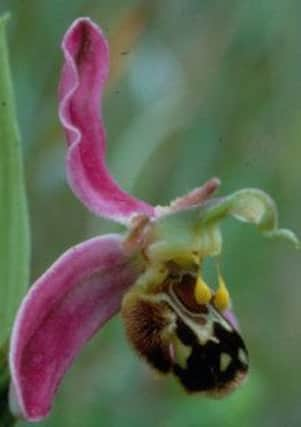Orchids - a riot of colour this summer


Commenting on the wonderful displays of orchids Phil Davidson, National Trust Wildlife and Countryside Advisor said: “During July, Portstewart dunes host an abundance of pyramidal orchids, northern marsh-orchids and the rarer bee orchid in a few scattered locations.
£It is a delight to see colourful carpets of these orchids amongst the dunes and know that the grazing management regime which we introduced in 2009 to improve the dune habitat has delivered such fantastic rewards. Orchids have always been a particular favourite of mine, and I am not alone, for the beauty of the flowers and the variety of brilliant colours, have won them numerous fans.”
Advertisement
Hide AdAdvertisement
Hide AdWhite Park Bay is home to eight different species of orchids. In early summer, there is a fabulous flush of early purple orchids on the dunes, followed by the beautiful deep pink of pyramidal orchids in July and with a bit of searching you may find the more inconspicuous frog orchid. The wildlife friendly managed paddock at Rowallane Garden also has an abundance of orchids during the summer, including the striking greater butterfly orchid with its slender stem and delicate flowers.
During the later half of the summer the common spotted orchid, which varies in colour from almost pure white to a deep lilac, and the Northern Marsh Orchid can be seen at many Trust sites including Downhill, Ballyconaghan, Ballymacormick and Castle Coole to name a few.
It can take many years for a germinated orchid seed to form a tuber and push its way above ground, and many more before it begins to flower. Coupled with a requirement for some helpful soil fungi, the correct grazing management and in many cases very specific insect pollinators, the humble orchid needs a very stable environment in which to thrive. Luckily these conditions occur at many National Trust places and you are rewarded with a summer of orchids from early purple in spring to Irish lady’s tresses in late summer and early autumn.
It was Charles Darwin who noted how the morphological form of the orchids flower matched the feeding apparatus of its pollinating insect. Darwin would certainly not have been disappointed had he visited some National Trust places today, as he could expect to find frog, bee and butterfly orchids in abundance.
Advertisement
Hide AdAdvertisement
Hide AdPhil added: “Many of our rarer orchids such as Irish Lady’s tresses are protected and need our careful management to ensure they flourish for all to enjoy. In addition to the visual beauty, the presence of orchids can give us an idea of the general health of our environments and the National Trust strives to manage these unique sites for all to enjoy. I would encourage everyone to see these beautiful wildflowers for themselves.”